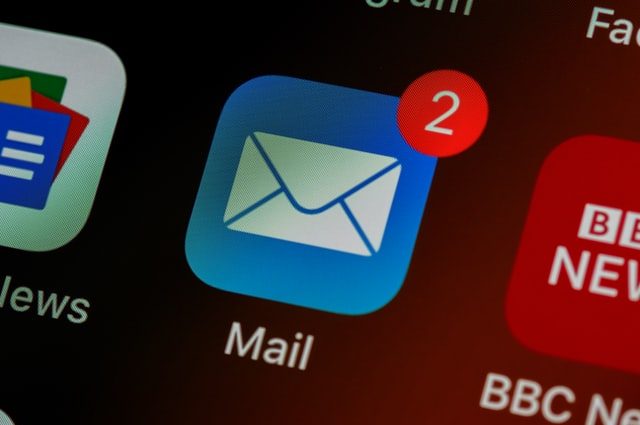It’s hard to believe, but there was a time when Hotmail was more than just an email service. It was the primary internet service of millions of users who relied on it for their email needs.
This was back in the early 2000s when the internet wasn’t as popular as it is today. Hotmail and other similar services were instrumental in making email a prominent means of communication among individuals and businesses, and organizations.
One could even say that without Hotmail, Gmail would have never been created. That being said, this excellent email service has since gone through several transformations that have reduced it to its current state.
Before we delve into these transformations, let’s look at what made Hotmail such an excellent email service in the first place.
What made Hotmail a popular email service?
The rise of email as a popular means of communication can be traced back to the early 1970s, when two MIT researchers, Sabeer Bhatia and Jack Smith, were trying to figure out a way to send everyday memos between employees.
The result was a computer program called “Arpanet” that enabled the two researchers to send memos to each other using a computer terminal. This was a huge milestone not just in industry but in the world.
Hotmail symbolized “freedom” from ISP-based email and the ability to access a user’s inbox from anywhere in the world.
The name “Hotmail” was chosen out of many possibilities ending in “-mail” as it included the letters HTML, the markup language used to create web pages (to emphasize this, the original type casing was “HoTMaiL”). The limit for free storage was 2 MB.
It was the first time experts in different fields could communicate without having to rely on people and phone lines to do so. This led to an exponential growth in other forms of communication and led to an increase in businesses and organizations using email for their communications instead of placing calls.
This was a huge advantage for a business as it allowed them to communicate more efficiently with their customers and employees.
Hotmail quickly gained in popularity as it was localized for different markets around the globe and became the world’s largest webmail service, with more than 30 million active members reported by February 1999. Hotmail was one of the only email services that allowed users to access email from any internet-enabled device.
Besides being an excellent email service, Hotmail also boasted some great features like a free email address, an excellent user interface, and support for attachments. Hotmail also could send emails to multiple addresses without email forwarding.
Acquisition by Microsoft
In 1999, Microsoft acquired Hotmail and its parent company, “Expidite Inc.”, for $400 million. This acquisition allowed Microsoft to turn Hotmail into its new primary email service.
Around 2005, the Hotmail brand was planned to be phased out when Microsoft announced that the new mail system would be called Windows Live Mail. Still, the developers backtracked after beta-testers were confused with the name change, preferred the already well-known Hotmail name, and decided on Windows Live Hotmail.
After a period of beta testing, it was officially released to new and existing users in the Netherlands on November 9, 2006, as a pilot market. The beta development was finished in April 2007. Windows Live Hotmail was released to new registrations on May 7, 2007, as the 260 million MSN Hotmail accounts worldwide gained access to the new system.
The old MSN Hotmail interface was accessible only by users who registered before the Windows Live Hotmail release date and had not chosen to update to the new service. The roll-out to all existing users was completed in October 2007.
The downfall of Hotmail and Why Microsoft decided to relaunch today’s Outlook?
The decline of Hotmail was due to its increasing complexity, which has led to a decline in the number of users using it. Also, the lower popularity of Hotmail has led to a decrease in ad revenue.
There were many security issues. In 1999, hackers revealed a security flaw in Hotmail that permitted anybody to log in to any Hotmail account using the password ‘eh’. At the time, it was called “the most widespread security incident in the history of the Web.
The rise of Gmail was the final nail in the coffin. Featuring more significant storage space, speed, and interface flexibility, Gmail spurred a wave of innovation in webmail.
Security issues, tarnished reputation of Hotmail, and growing competition might have forced Microsoft to relaunch its emailing services. But Hotmail was the basis of modern-day Outlook we know.
Today, Hotmail is almost unrecognizable from its excellent email service. The service was later renamed “Outlook” and revamped to reflect this change.
Outlook is a respectable email service offering a great user interface and plenty of features. Outlook.com was first introduced on July 31, 2012, when its beta version was made available to the general public. Existing Hotmail customers could freely upgrade to the preview version of Outlook.com and downgrade back.
Outlook.com graduated preview stage on February 18, 2013. According to Microsoft, the upgrade was deployed on April 3, 2013. Users kept their existing Hotmail accounts and received the option of having an @outlook.com email address.
By May 2013, the upgrade was completed, and Outlook.com had 400 million active users. By May 2014, Outlook.com continued to have 400 million active users.
In conclusion, Hotmail was shut down as it did not get the advantage of the enormous capabilities and opportunities that could derive from possible successful alliances; therefore, it did not tap effectively into resources, skills, and knowledge that could benefit it.











